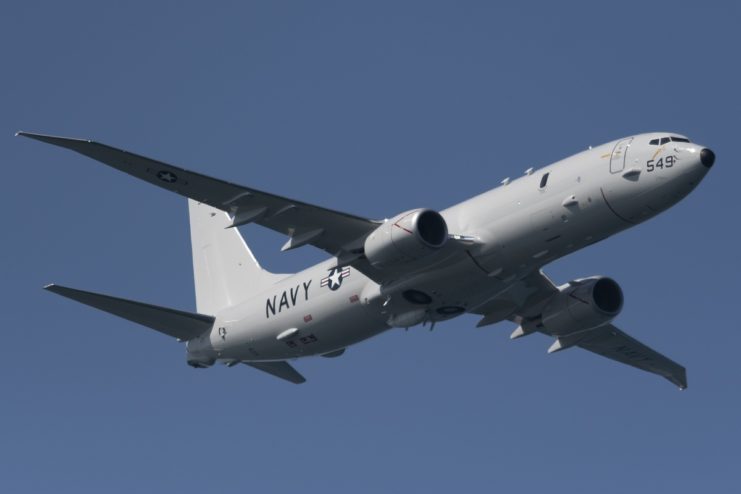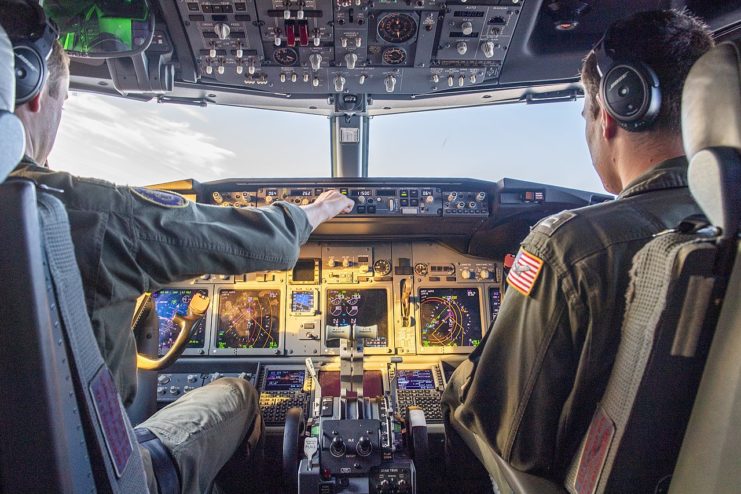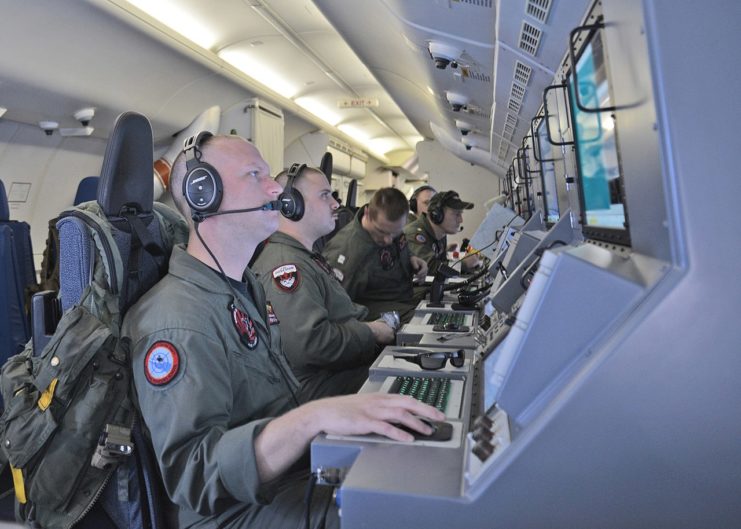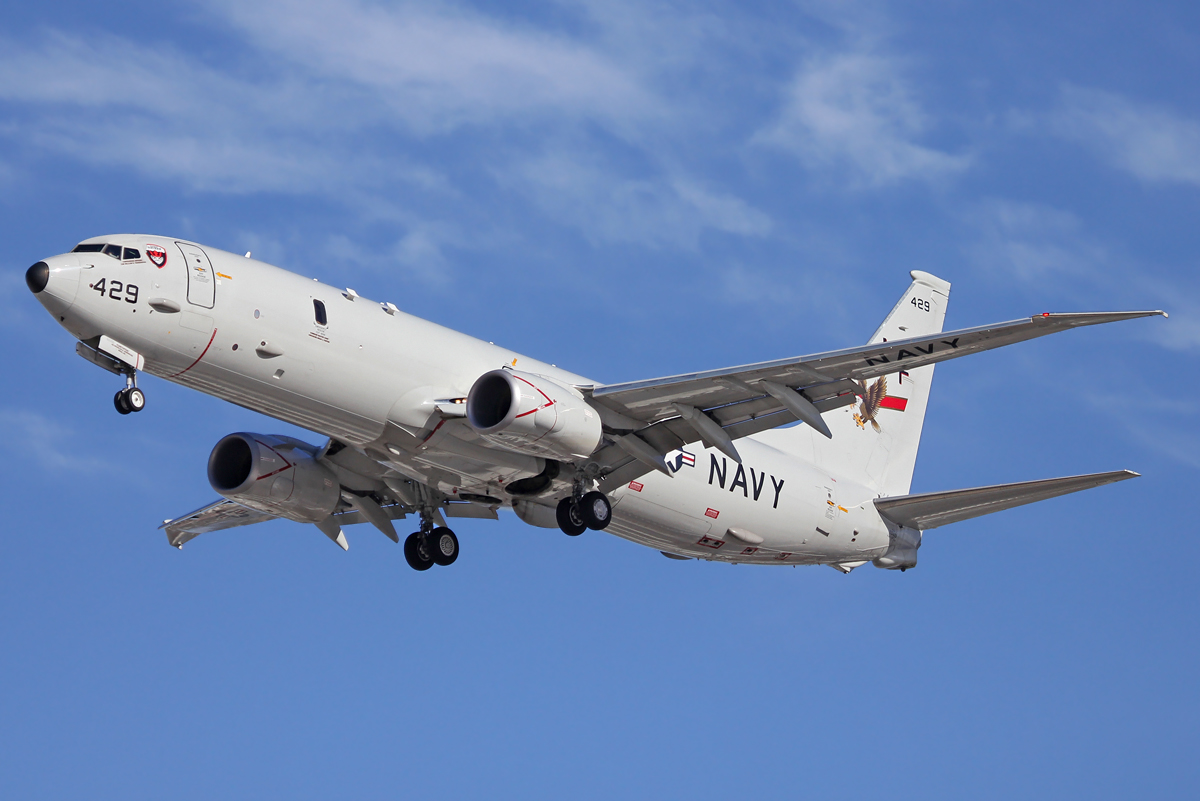As the US becomes more focused on China’s nuclear ballistic missile submarines, the Boeing P-8 Poseidon is the aircraft that is doing much of the studying, and if need be, the attacking. The aircraft is relatively new, having first flown in 2009, but it is in the process of replacing the aging P-3 Orion, an aircraft that was introduced in the 1960s.
The story of the P-8 starts in the 1980s when the US Navy wanted an aircraft that could replace Lockheed’s P-3 Orion. As this airframe was progressively updated its range decreased – a real problem for an aircraft that is tasked with flying across thousands of miles of ocean.
Although Lockheed was given the green light to produce a replacement, the P-7, this never materialized. The Navy made a similar request again in 2000, with Lockheed again submitting an aircraft similar to the P-3. However this time Boeing made a proposal too based on their 737-800 airliner. An order for 108 aircraft was made in 2004, although since then more than 140 have been built.
First flying in 2009, the Poseidon was initially built with rather simplistic systems that would then be upgraded later on. This helped to limit budget and schedule issues. In 2013, after completing tests that insured the airframe could last 25 years and successfully accomplish its requirements – scoring a direct hit with an AGM-84 Harpoon anti-ship missile – the Poseidon was accepted into service.
Unusually for these sorts of projects, the Poseidon actually came in under budget expectations.
The P-8 Poseidon

Compared to the older P-3 the Poseidon is a dramatically more capable aircraft in almost every single way. Its greater range allows the aircraft to conduct ten-hour missions over 1,200 nautical miles or stay over a particular location for longer periods of time. Despite having two fewer engines, the Poseidon possesses a higher service ceiling and much higher top speed – 564 mph versus the P-3’s 473 mph – useful for covering areas of ocean in less time.
Its basis as an airliner means even in its military form the crew flies in relative comfort compared to usual task-focused military aircraft. Thanks to this the crew of nine can concentrate on their missions much better.

All of this equates to an aircraft that can linger over the oceans around China.
While the airframe is impressive on its own, it’s the technology and weapons it carries that make the Poseidon a truly deadly foe.
The Poseidon is equipped with a high-resolution AN/APY-10 radar designed specifically for the aircraft and optimized for maritime missions. This radar is able to detect and track objects above and below the surface, and even identify surface vessels.
MX-series optical and infrared cameras can scan the ocean with great detail from high altitudes. Additionally, the Poseidon can air-drop sonobuoys into the sea that then listen for sounds transmitted through the water.

The aircraft can function as part of a wider network with other units like ships and drones, all gathering and relaying data to create a detailed picture of the environment. As it operates from a higher altitude than the P-3, the Poseidon lacks a magnetic anomaly detector (MAD). However, it is reported that Poseidon’s acoustic sensor system more than makes up for this.
The aircraft features an internal bay behind the wings with five hardpoints, with six other hardpoints located on the exterior. These hardpoints can carry a variety of weapons, including cruise missiles, anti-ship missiles, depth charges, mines, and torpedoes.
It can drop a Mark 54 torpedo from up to 30,000 ft.
Its combat capabilities are obvious, but the Poseidon is equally capable in peacetime activities. When necessary, the Poseidon can serve as a proficient search and rescue aircraft.
US Navy P-8 Poseidon helped search for the missing cargo ship SS El Faro in 2015, which had been sunk by Hurricane Joaquin. Then, in 2018, a Poseidon rescued three fishermen in the South Pacific Ocean who had been adrift for eight days. The aircraft dropped a search and rescue kit containing supplies and communications equipment.
Currently, both the P-3 Orion and P-8 Poseidon are in service with the US, but eventually, the Orion will be replaced entirely by the newer aircraft.
